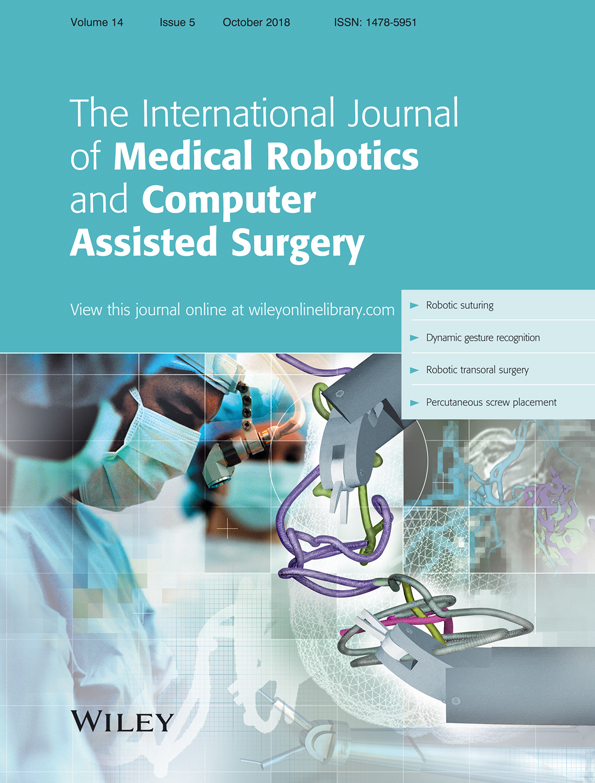Accuracy of the femoral tunnel position in robot-assisted anterior cruciate ligament reconstruction using a magnetic resonance imaging-based navigation system: A preliminary report
Abstract
Background
Tunnel misplacement is a common cause of failed anterior cruciate ligament (ACL) reconstruction. In this study, the accuracy of the femoral tunnel position was evaluated in robot-assisted ACL reconstruction using a magnetic resonance imaging (MRI)-based navigation system. We hypothesized that a difference of less than 2 mm between the planned femoral tunnel position and the created one was achievable.
Methods
Four cadaveric knees underwent robot-assisted ACL reconstruction. A 3-dimensional model using pre-operative MRI images was used for preoperative planning, and a computed tomography (CT) scan was performed postoperatively. The planned and the created femoral tunnels were compared to assess the accuracy of the femoral tunnel position.
Results
The distance between the intra-articular points of the planned and the created tunnels was 7.78 mm in the first experiment and 1.47 mm in the last one. The difference in tunnel length was 4.62 mm in the first experiment and 0.99 mm in the last one.
Conclusions
Accuracy of the femoral tunnel position improved with each robot-assisted ACL reconstruction using an MRI-based navigation system. In the last experiment, the accuracy of the femoral tunnel position was satisfactory.
CONFLICT OF INTEREST
Jun-Woo Park and Yong-Hee Han were employees of Hyundai Heavy Industries, Co., Ltd.




